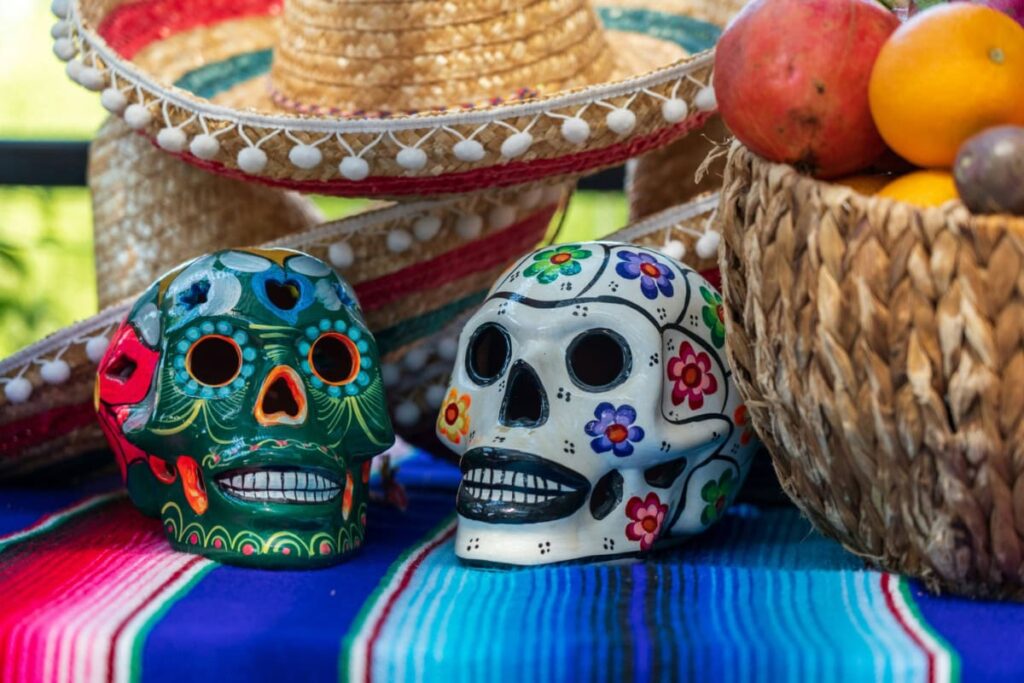Celebrate Día de los Muertos with Beautiful Altars
Día de los Muertos, also known as Day of the Dead, is a heartfelt tribute to the lives of those who have passed. This ancient Mexican tradition blends indigenous customs with Spanish influences, creating a vibrant celebration filled with rituals, colors, and meaning. Families come together to remember and honor their loved ones by creating ofrendas (altars) adorned with photos, food, and mementos, transforming their homes into sacred spaces of remembrance and joy.
Colores Mexicanos’ Co-owner Gabriel Neely-Streit explains, “Dia de Muertos has gained popularity in Chicago and across the U.S. in recent years. It’s a beautiful tradition that allows us to celebrate life, process grief, and remember our loved ones. Families of all backgrounds, especially Latinx individuals reconnecting with their heritage, come together to celebrate.”
The significance of the altars lies in their ability to serve as a bridge between the living and the deceased, creating a physical space for remembrance and honor. The three levels of the altar represent the journey to Mictlán: the Land of the Dead.
Whether you’re creating a simple altar or a fully immersive environment in your apartment in Chicago, new home in Portland, or rental home in Los Angeles, this article explores the fascinating history of Día de los Muertos, delving into its origins, significance, and practical tips on how to enjoy this meaningful occasion by designing your home to reflect the spirit of the holiday.
The origins of Día de los Muertos can be traced back to ancient Mesoamerican civilizations like the Aztecs and Maya, who held deep reverence for death and the afterlife. The celebration evolved over time, influenced by Catholicism when Spanish colonizers arrived in the 16th century, adapting the timing to coincide with All Saints’ Day and All Souls’ Day.
Today, Día de los Muertos is celebrated not only in Mexico but also around the world. Communities come together to honor their loved ones by creating beautiful altars, colorful decorations, and festive gatherings, continuing to express love, memory, and the enduring connection between the living and the dead.
The heart of Día de los Muertos celebrations lies in the ofrendas, or altars, which provide sacred spaces for families to honor their deceased loved ones. These displays are deeply personal tributes that reflect memories and characteristics of those being celebrated.
To create a meaningful ofrenda, select a sturdy table as the base, incorporate a clear photograph of the deceased, marigold flowers, candles, papel picado, favorite foods and beverages of the deceased, personal items, and memorabilia that represent their interests. These items serve as a tangible connection to the past and create a bridge between generations.
Honoring memories through ofrendas is a personal ritual that allows individuals to memorialize their deceased loved ones in unique and meaningful ways. The traditional three-tiered ofrenda symbolizes the connection between heaven, earth, and the underworld, providing a beautiful and personal tribute.
Remembering loved ones through ofrendas extends beyond the home. Community celebrations, like the one held at the San Angelo Hispanic Heritage Museum, provide shared moments for honoring loved ones and enriching cultural heritage.
Día de los Muertos serves as a powerful reminder of the enduring connection between the living and the dead, celebrating memories through altars and cherished traditions. This beautiful tradition, originating from pre-Hispanic times, continues to be admired and celebrated worldwide.
Embrace the spirit of Día de los Muertos by creating your own unique ofrenda, honoring the memory of your loved ones with love, remembrance, and celebration.



